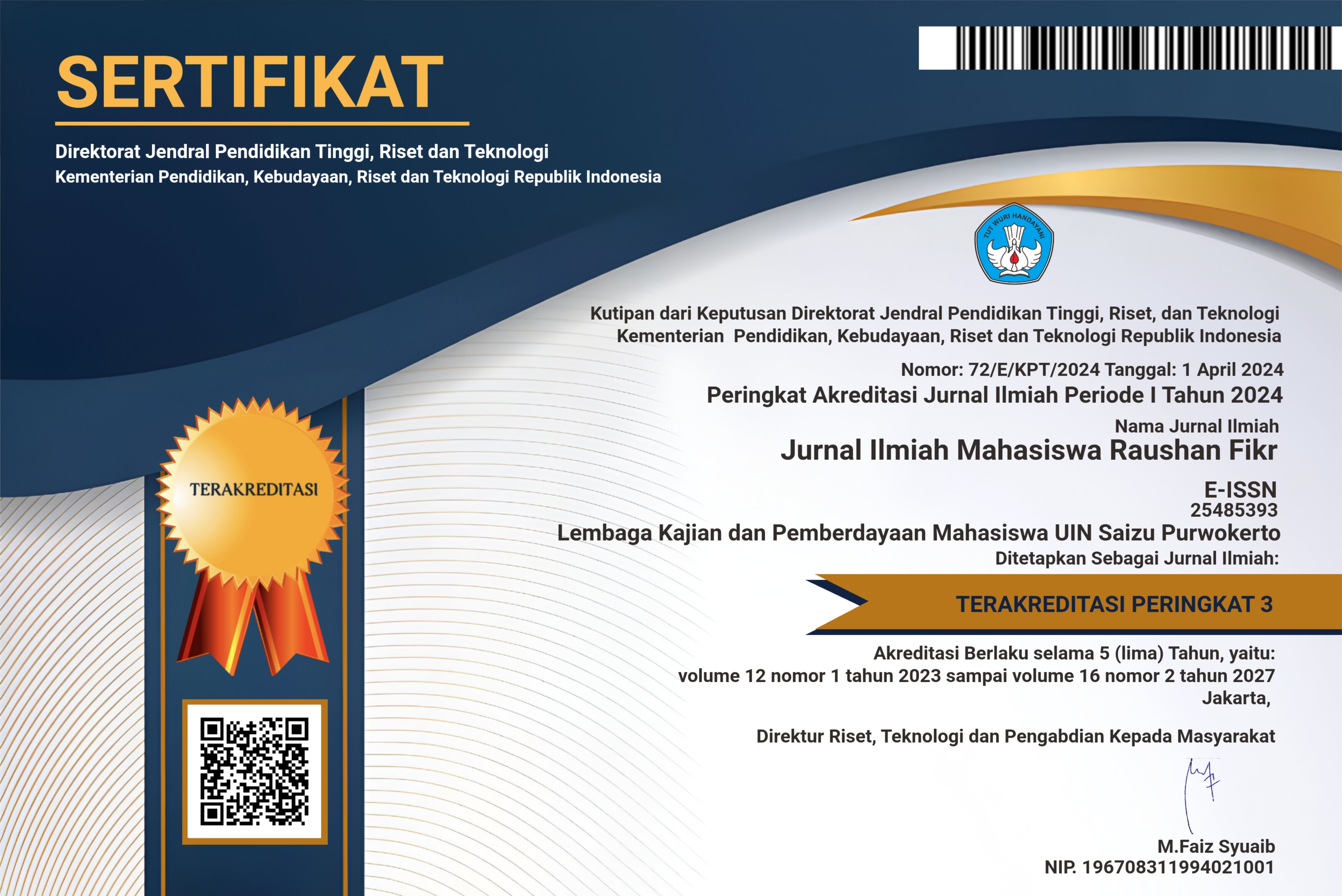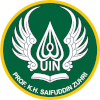SOCIAL HUMANOID ROBOT DAN PENGEMBANGAN KARAKTER SOSIAL QURANI MANUSIA
DOI:
https://doi.org/10.24090/jimrf.v8i2.3063Keywords:
Robot, human and quranic social character.Abstract
Robotic technology continues to develop as recently as 2016, Hong Kong Hanson Robotics activates the Social Humanoid Robot named Sophia. This robot has appearance and behavior like humans who can dialogue, move and express. This humanoid robot technology continues to be developed so that intelligence, response ability, and social skills increase. In the future, the development of the quality and quantity of humanoid robots can be a threat to humans in the social environment. The ability of robots that are more reliable can shift the role of humans. However, in the Koran it is explained that humans have been created in the best possible form and carry out their duties as caliphs on earth. Therefore, humans must try so that they are not defeated in the midst of developing technological sophistication of robots. This study seeks to examine what are the special human abilities implied in the Koran. The goal is for humans to know and maximize human privileges so that they still exist even though the ability of increasingly sophisticated robots can match, even rival human abilities. This research was carried out by conducting a library research on the content in depth in the Koran. This study collects verses from the Koran and supporting traditions to analyze phenomena in the contemporary era. From this study, the results show that in the Koran it is stated that human beings are moral beings as mentioned in the letter al-Qalam verse 4. In addition, in the letter Ali-Imran verse 159 also explains the meek behavior of difficult fellow human beings to be equated with mechanical and procedural robot performance. By maximally internalizing both messages in the Koran, humans are able to remain superior in the social environment because they have piety and faith as a guide to life even though humanoid robot technology continues to be developed.Downloads
References
Al-Maraghi, A. M. (1993). Terjemah Tafsir Al-Maraghi Juz: 28, 29 dan 30. (B. A. Aly, Penerj.) Semarang: PT. Toha Putra.
Al-Maragi, A. M. (1993). Tafsir Al-Maragi (Vol. IV). (B. A. Noer, Penerj.) Semarang: CV. Toha Putra Semarang.
Haidar, A. (2003). Kebebasan Seksual Dalam Islam. (M. Jawad, Penerj.) Jakarta: Pustaka Zahra.
Hamka. (1987). Tasawuf Modern. Jakarta: Pustaka Panjimas.
Hasan, A. M. (2017). Ancaman Sesungguhnya Bukan Buruh Cina, Tapi Robot Pekerja. Dipetik Januari 31, 2019, dari https://tirto.id/ancaman-sesungguhnya-bukan-buruh-cina-tapi-robot-pekerja-ceBn
Hawwa, S. (2006). Tarbiyatuna al-Ruhiyah. (A. Munip, Penerj.) Yogyakarta: Mitra Pustaka.
Ilyas, Y. (2000). Akhlaq Kuliah. Yogyakarta: Pustaka Pelajar Offset.
Imam Jalaluddin Al-Mahalli, Imam Jalaluddin As-Suyuthi. (2006). Terjemahan Tafsir Jalalain Berikut Asbabun Nuzul (Vol. II). (B. Abubakar, Penerj.) Bandung: Sinar Baru Algesindho.
Kamaruddin, N. H. (2017). Pertembungan Dunia Robot, Manusia. Sinar Harian.
Katsier, I. (2004). Terjemah Singkat Tafsir Ibnu Katsier Jilid 8. (S. B. Bahreisy, Penerj.) Surabaya: PT Bina Ilmu.
Lajnah Pentashih Mushaf Al-Qur’an. (2014). Tafsir Al-Qur’an Tematik (Vol. III). Jakarta: Kamil Pustaka.
Mukhtar, N. (2019, Januari 26). (W. Nurasih, Pewawancara)
Pusat Bahasa. (2008). Kamus Besar Bahasa Indonesia Pusat Bahasa. Jakarta: PT Gramedia Pustaka Utama.
Saeed, A. (2015). Paradigma, Prinsip dan Metode Penafsiran Kontekstualis Al-Qur’an. (S. Syamsuddin, Penyunt., & L. I. Fina, Penerj.) Yogyakarta: Baitul Hikmah Press.
Shihab, M. Q. (2003). Tafsir Al-Misbah: Pesan, Kesan dan Keserasian Al-Qur’an (Vol. XI). Jakarta: Penerbit Lentera Jati.
Siswaja, H. D. (2008). Prinsip Kerja dan Klasifikasi Robot. Jurnal Media Informatika, 7, 147-157.
Sophia (Robot). (2018, Mei 18). Dipetik Januari 31, 2019, dari WikipediaEnsiklopedia Bebas: https://id.wikipedia.org/wiki/Sophia_(robot)
Suhartono, E. (2011). Kecerdasan Buatan. Mengenal Teknologi Informasi, 1-9. Dipetik Januari 31, 2018, dari tobby.synthaisite.com
Syaikh, A. b. (2017). Lubabut Tafsir Min Ibni Katsir (Vol. II). (M. A.-A. M, Penerj.) Jakarta: Pustaka Imam Asy-Syafi’i.
Syaikh, A. b. (2017). Lubabut Tafsir Min Ibni Katsir (Vol. VI). (M. A. al-Atsari, Penerj.) Jakarta: Pustaka Imam Asy-Syafi’i.
Downloads
Published
How to Cite
Issue
Section
License
Authors who publish with this journal agree to the following terms:
- Authors retain copyright and grant the journal right of first publication with the work simultaneously licensed under a Creative Commons Attribution-NonCommercial-ShareAlike 4.0 International License that allows others to share the work with an acknowledgement of the work's authorship and initial publication in this journal.
- Authors are able to enter into separate, additional contractual arrangements for the non-exclusive distribution of the journal's published version of the work (e.g., post it to an institutional repository or publish it in a book), with an acknowledgement of its initial publication in this journal.
- Authors are permitted and encouraged to post their work online (e.g., in institutional repositories or on their website) prior to and during the submission process, as it can lead to productive exchanges, as well as earlier and greater citation of published work (See The Effect of Open Access).
















